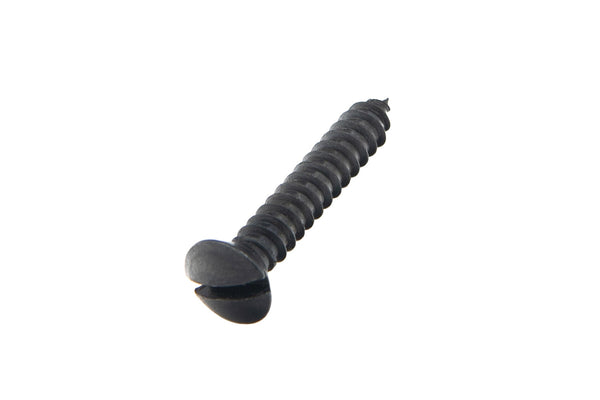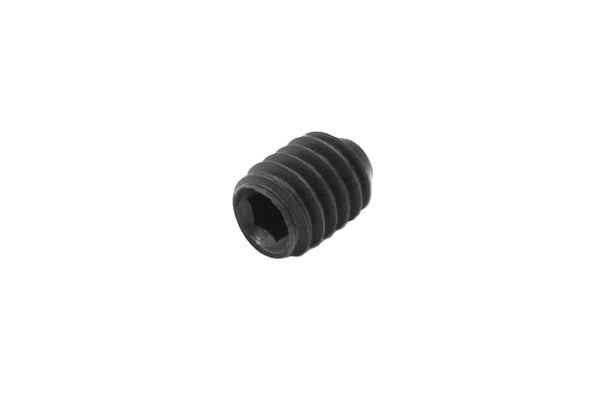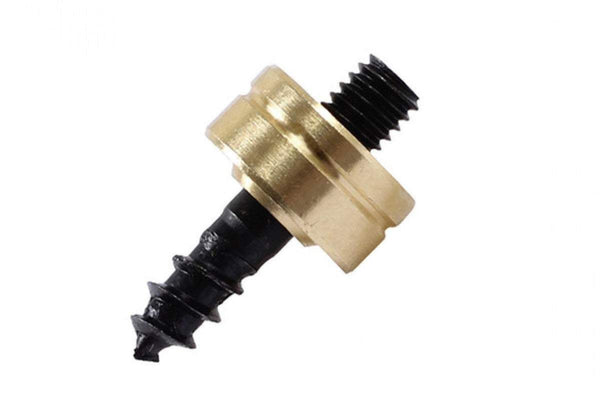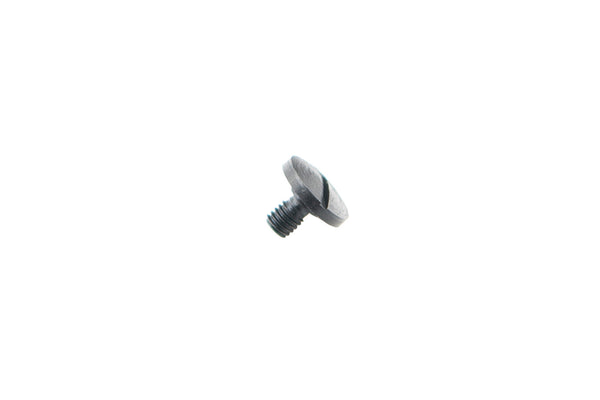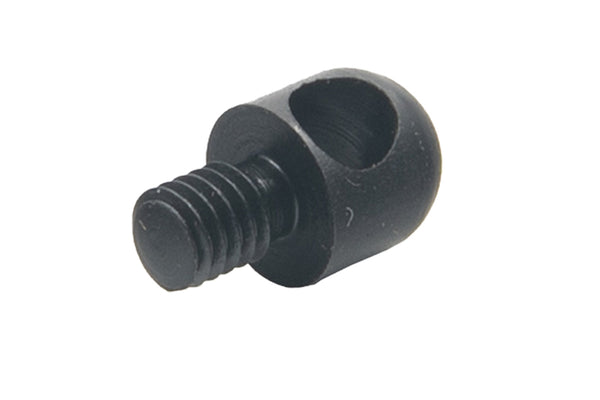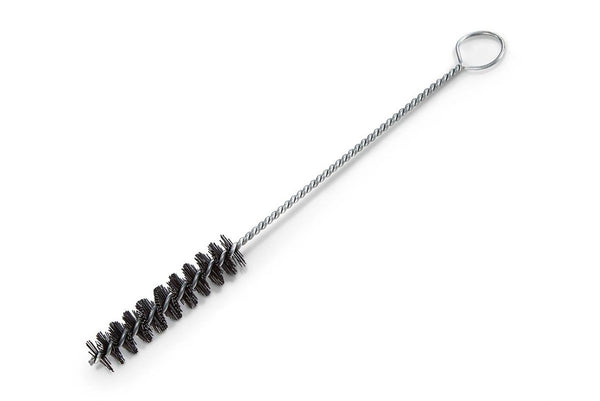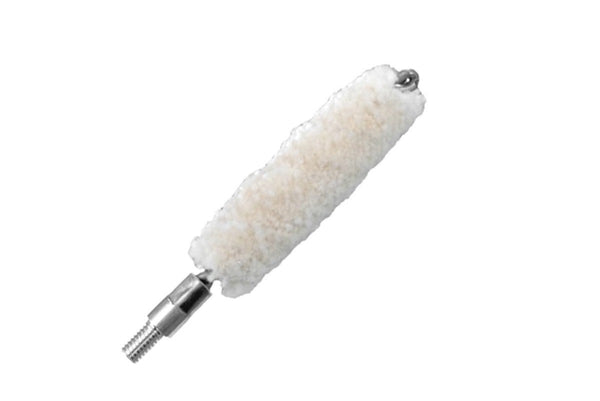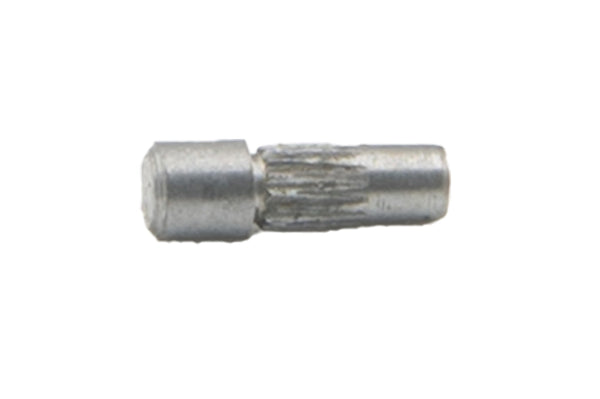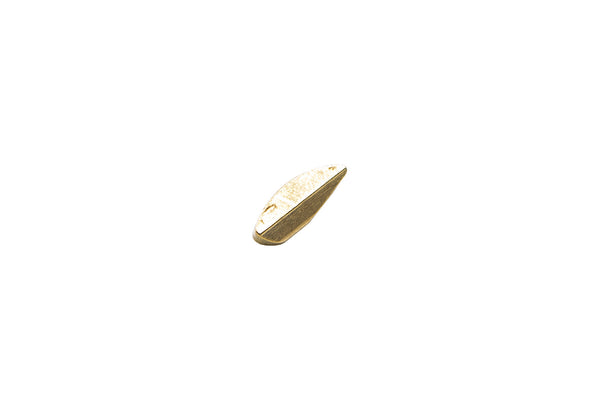Call 1(855) 236-5000
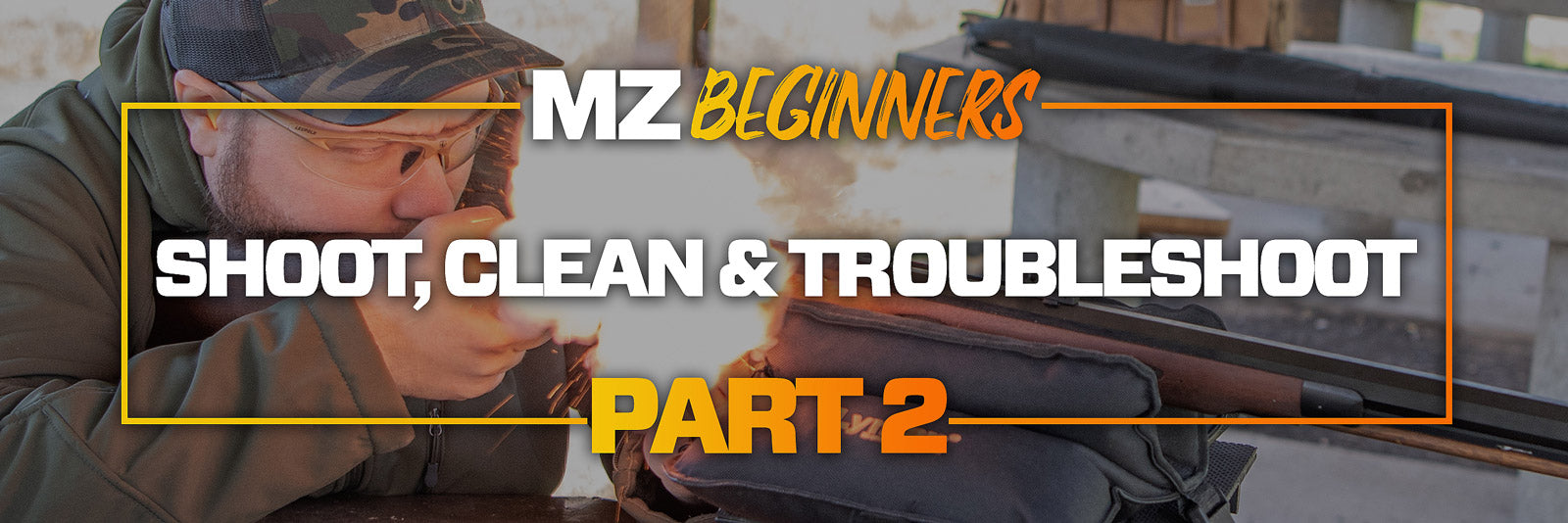
 >
>

How To Shoot, Clean & Troubleshoot Your Muzzleloader - The Beginners Guide To Muzzleloading Series - Part 2

< --- Back To Part One or Forward To Part Three --- >
If you read our previous article we discussed various muzzleloader options as well as all of the necessary components and gear that are needed to get shooting and ready for hunting season. If you found this article and have not read the first article we recommend you check out that article first then come back to this one.
With our gear properly setup it is time to dive into the particulars of how to use our new muzzleloader effectively in the field. To start with it is important that we ensure we have our new muzzleloader ready to take its first charge. Step one is simply to clean the factory grease and oils out of the barrel and off of the action and parts of the muzzleloader. This simple step (that often gets overlooked) can save you hours at the range and hundreds of dollars in bullets, powder and primers. Cleaning your gun right out of the box is not a step you want to skip.
That may lead to you to wonder why? You may remember from our previous article that we noted you will not want to use any oil based cleaning products or lubricants with black powder. This is because when petroleum and black powder (even black powder substitutes) mix together you end up creating a sludgy film that coats the bore of your muzzleloader and takes hours of cleaning to clear out. This film will negatively impact the performance of your muzzleloader and create frustration very quickly. The only exception to this rule is if you are shooting Blackhorn 209 powder only, Blackhorn 209 is not affected by petroleum based cleaners in this way. However, it is worth noting that you can also effectively clean Blackhorn 209 out of the bore with a water based cleaning agent as well, so if you stick with water based cleaners you are good to go.
If you are not sure how to properly clean your new muzzleloader out of the box, don’t worry we are going to cover that right now.
Here is a good video resource, below you can also find step by step instructions below.
Cleaning Steps
Step 1:
Remove your new muzzleloader from the packaging. Remove the breech plug, if your gun has an easily remove plug, from the breech and inspect the barrel to ensure it is unloaded. Leave the breech plug out of the muzzleloader and proceed to step 2.
Note: For traditional style guns that do not have a removable breech plug, you can use the ramrod that comes with the gun to check and see if the barrel is unloaded.
Step 2:
Take a cleaning patch and apply solvent to the patch. Install a cleaning jag to the end of the ramrod you are using to clean the gun. Run the patch with solvent applied from the breech to towards the muzzle and out the end of the barrel. Remove the patch from the jag and pull the ramrod back through the barrel. Leave the solvent to sit for 5 minutes.
Step 3:
Take a dry patch with no solvent applied and run the patch through the bore from breech to muzzle just like before. Remove patch and pull the ramrod back through the barrel. Run a second dry patch in like fashion through the bore and examine the bore for remaining oils and greases.
Step 4:
Repeat steps 2 and 3 as needed until the barrel is clear of oils and greases. The bore should look shiny and there should be no visible debris once the gun has been properly cleaned. Dry cleaning patches should come out clean without any sign of grease or oil on them.
Step 5:
Inspect the breech plug and clean if needed. The breech plug should not need any cleaning, however, some times there is a small amount of residue left on or in the breech plug from factory test firing that needs to be cleaned out. To clean the breech plug, simply drop it into your parts soaker and leave to sit for 30 – 45 minutes. Then remove the breech plug and wipe it down with a cleaning patch or two and reapply anti-seize to the threads.
Note: When applying anti-seize do not over do it! A little bit goes a very long way. If you apply too much the breech plug will get stuck or become very hard to remove.
Now that your muzzleloader is clean and ready to accept its first charge let’s get into what that should look like.
It is important to note that every gun is unique and your muzzleloader may like a slightly different charge than someone else’s, however, having said that we can get you some great starting points that will get you good reliable performance. You can then make small adjustments as needed to get the groupings to your liking.
When first starting out we recommend that you shoot your muzzleloader at 100 grains of powder by volume at 50 yards and see how the gun groups at that distance. If you are shooting loose powder and you are not grouping as tight as you want, we recommend reducing your load in increments of 5 grains by volume until you see better groups. For hunting purposes we do not recommend going any lower than 70 grains of powder by volume, this is to maintain lethal velocity at 100 yards. If you want to shoot beyond 100 yards, it is best to use a larger charge. We will get into that more shortly.
Let’s start for now with how to properly load the muzzleloader. Please note you will need to make sure you have reinstalled the breech plug before loading.
Here is a good video resource. We also have step by step instructions below.
Proper Loading
Step 1:
Examine the bore from the breech end with the gun pointed in a safe direction and ensure the barrel is unloaded and free of any blockage or debris.
Step 2:
With breech plug reinstalled, place the muzzleloader’s recoil pad on the ground with the barrel angled away from your body.
Step 3:
If you are using loose powder take your powder measure and pour the powder down the bore of the rifle. If you are using pelletized powder drop 2 or 3 pellets down the bore.
Step 4:
Place the bullet of your choice in the end of the muzzle and use your bullet starter to push the bullet below the lip of the muzzle. We recommend using the shorter end of the bullet starter first then following up with the slightly longer starting rod side of the bullet starter to get the bullet about 2-3 inches into the bore.
Step 5:
Take the loading ramrod and push the bullet down to the powder charge. This step is very important to do that same way every time to get the best consistency out of your muzzleloader. If you are using pellets be sure you do not crush the pellets during loading or your groups will be very poor.
We recommend running the bullet down until you feel the bullet contact the powder charge. After that take the ramrod and pull it up the barrel then throw it back down the barrel 2 or 3 times, if the ramrod does not bounce back up the bullet is not properly seated. Once you know you have the bullet properly seated mark the ramrod so you know where it should be loaded to each time.
As mentioned before consistency at this step is crucial. Find a good way that works well for you and try to do it the same way every time. The more consistent you can be in this step the better your performance will be.
Step 6:
With the barrel now pointed down range, break the action open and install a primer in the breech plug.
The gun is now considered load and is ready to be fired.
Note: NEVER install a primer before loading the barrel. This may result in serious injury or death. The primer should only be installed after the barrel has been properly loaded.
Once you have familiarized yourself with your new muzzleloader and you are confident with shooting and loading the gun, it is time to start working on getting the best groups possible.
This will require a few steps. We touched on a little bit of the powder charge adjustments above but there are additional factors to consider as well.
To lay the foundation for this part of the process we will examine the process then dive into the nuance of powder, bullets and primers.
We recommend the following process when sighting in your muzzleloader and shooting in general.
Sighting In Your Rifle
Step 1:
Fire a cold bore/clean barrel shot down range.
Step 2:
Reload and fire a three shot group after the initial cold bore/clean barrel shot.
Step 3:
Assess the three shot group (excluding the first shot) and make adjustments to your scope or sights accordingly.
Step 4:
Clean the barrel using the prescribed cleaning method mentioned earlier in this article. Please note you do not need to clean the breech plug in a parts soaker for this stage. We simply clean the faces and threads on the plug and run a wire through the fire channel to ensure it is clear.
And now on to making adjustments
Step 5:
If your gun is grouping well you can simply repeat steps 1-4 until you are dialed in on your optic or sights. However, if you are getting spaced out groups you may need to make adjustments to your powder charge or bullet.
If your groups are larger than 3 inches at 100 yards, we recommend dropping the charge down to 70 grains by volume and trying the shooting process again. This should bring your groups much closer and you can then start working up in increments of 5 grains by volume until you find a harmony between velocity and precision.
Step 6:
If after your best attempts to adjust the powder charge are unfruitful it may be time to consider a different projectile. To get the best results out of your muzzleloader you will want to get a tightly fitting bullet that is still easy enough to load with one hand on the ramrod. If you missed our bullet suggestions in the first article we suggest checking that article out to get you on the right track.
Step 7:
In rare cases you may find the primer is to blame for poor groupings, however, that is generally not the case. We only mention that here so that after trying everything else, if you are still getting poor groupings you know to change primers.
Please note that before trying any adjustments on the powder charge, bullet or primer you will want to make sure your scope rings are not loose. If your rings or scope base are lose you will never be able to achieve good groups.
If you ever get really stuck and just can’t figure out what you need to do you can always call our customer service team at 855 236 5000 and we will be happy to help you out.
Here is a good additional resource on load development you may find useful.
Now that we have covered the basics of how to clean, shoot and make adjustments let’s take a look at how to put all of this knowledge to use in the field.
Performing well in the field is much more than simply having an accurate load. On top of mastering your hunting skills there are considerations with black powder muzzleloader hunting that need to be taken.
Many people think that with muzzleloading you get one shot and if you miss it then that is the end of the hunt, however, that is not always the case. In fact you often will be shocked to see an animal hanging close after shooting if you miss with a muzzleloader. This is primarily due to the fact that muzzleloaders often do not produce the same sharp cracking noise that many centerfire rifles do. It is that sharp cracking noise that spooks most animals, the more subtle booming noise a muzzleloader makes does not often send an un-hit animal running.
Because of this it is important to ensure you can quickly and safely reload your muzzleloader in the field. We would recommend practicing with your speed loader of choice at the range with the same exact tools you plan to take into the field. Do this enough that it almost becomes second nature, that way you can keep your animal in sight while reloading your muzzleloader.
One question a lot of new muzzleloader hunters have is whether or not it is ok to leave a charge in the barrel for the duration of your hunt (overnight or even several days). Our advice is to keep a fresh charge in the barrel, which means you will want to unload the gun at the end of each day. There are a few reasons why we recommend this approach.
Frist, the last thing you want to happen when you have a nice animal in the crosshairs is to hear a primer go off but not the barrel. Leaving a powder charge in the barrel all night, especially if you are camping or if the gun will be left out in the cold at night can allow condensation to form in the barrel and make the powder charge a dud.
Second, black powder is corrosive and leaving a charge in the barrel for any extended period of time can begin to corrode and pit the barrel. For the longevity of your muzzleloader we advise cleaning the gun at the end of every day.
Third, and perhaps most important is safety. It is very easy to forget you have a charge in the barrel already and accidentally double load your muzzleloader. This can have catastrophic consequences and is another great reason to unload your gun at the end of each day.
To boil everything down to easy to remember principles here are the things to remember for the best performance in the field:
1. Sight in your muzzleloader with the exact powder charge, bullet and primer you are going to hunt with.
2. Make sure you have a possible bag with loading accessories and tools needed to keep your rifle functional in the field.
3. Make sure to unload your gun and the end of each day.
4. Make sure to reload with a fresh powder charge and bullet at the start of each day.
5. Field clean your muzzleloader at the end of each day.
6. Clean your muzzleloader thoroughly at the end of hunting season.
7. Properly treat your gun with rust prevent before storing until next season.
End of season deep clean and proper storage
The last topic we are going to cover in this article is properly cleaning and storing your muzzleloader in the off season.
In addition to the cleaning steps mentioned above for the barrel and breech plug (review if needed). You will want to be sure to remove the firing pin from your muzzleloader if possible and give the firing pin and the firing pin housing a very good detailed clean.
Note: DO NOT put any oils or rust preventatives in the firing pin housing or on the firing pin or bushing. Simply clean it and allow it to full dry then reinstall into the gun.
After the gun has been cleaned well and is free of all debris and residue, you will want to be sure to apply a rust preventative to the barrel and exterior metal surfaces. After rust prevent has been applied be sure to store the muzzleloader in a dry area where it will not have any issued with condensation or come into contact with any water.
You will then be ready to pull the muzzleloader out of the safe, give it a quick clean to remove any rust prevent and get back on the range next season.
We hope you enjoyed this article and that it helps you along in your muzzleloading adventures. If you wish to read the previous article in this series you can click the link below to go to Part 1.
Click HERE to go back to Part 1.
or
Click HERE to go forward to Part 3.
Thank you for being a part of the Muzzle-Loaders family we are glad you are here and we are happy to help you with any questions you may have. Please feel free to reach our muzzleloader experts at 855 236 5000 or via email at sales@muzzle-loaders.com

We are here for a higher purpose and believe you are too.
You are loved by God. In fact He sent His Son Jesus Christ to come to earth live a perfect life and die on a cross for our sins. More than that He raised this same Jesus Christ from the dead for our justification, that all who believe in Him should not perish but have eternal life with God.
Romans 3:23: "for all have sinned and fall short of the glory of God,"
Romans 5:8: "But God demonstrates His own love toward us, in that while we were yet sinners, Christ died for us."
Romans 6:23: "For the wages of sin is death, but the free gift of God is eternal life in Christ Jesus our Lord."
Romans 10:9: "that if you confess with your mouth Jesus as Lord, and believe in your heart that God raised Him from the dead, you will be saved;"
Romans 10:13: "for 'WHOEVER WILL CALL ON THE NAME OF THE LORD WILL BE SAVED'."
The joy of salvation:
Romans 5:1: "Therefore, having been justified by faith, we have peace with God through our Lord Jesus Christ,"
Romans 8:1: "Therefore there is now no condemnation for those who are in Christ Jesus."
Romans 8:38-39: "For I am convinced that neither death, nor life, nor angels, nor principalities, nor things present, nor things to come, nor powers, nor height, nor depth, nor any other created thing, will be able to separate us from the love of God, which is in Christ Jesus our Lord."
Scripture quotations taken from the (NASB®) New American Standard Bible®, Copyright © 1960, 1971, 1977, 1995 by The Lockman Foundation. Used by permission. All rights reserved. lockman.org
Additional video resources can be found on our YouTube channel linked below!
https://www.youtube.com/@MuzzleLoaderscom
